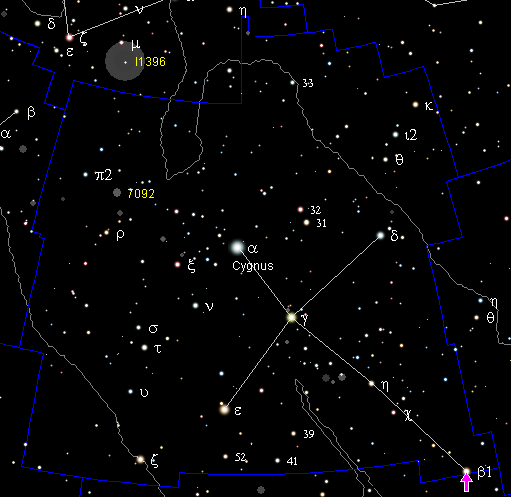Autumn Leaves and Bright Stars

We took a break yesterday from all the hustle and bustle of work, politics, and other stuff that occupies our lives and drove around the countryside, looking at the colors of the leaves on the trees.
It wasn’t the only reason we were out and about; some friends are on travel and we agreed to watch after their pets for a few days. It just so happens some gorgeous forests lie between here and there, so the ride was doubly worth it. Before we left, I snapped a pic of the maple tree in front of our house. It’s just exploding in yellows and oranges now. It’s beautiful for a few days and then, with a “whoom” you can almost hear, it loses all its leaves and we have to look at bare branches for about six months.

Now, trees aren’t the only colorful things out there this time of year. There’s a bright star called Albireo (or β (beta) Cygni for those of you who prefer the “proper” nomenclature). Those of us in the northern hemisphere mid-latitudes see it nearly overhead this time of year (around 8 p.m.). It’s the bottom star of the constellation Cynus the Swan. (Need a star chart? Go here or here.)
If you look at Albireo with the naked eye, it looks like a shiny whitish star. As it should. But, look at it through a telescope (say 6″ or 8″ (15 to 20 cm)), and suddenly Albireo turns into a colorful double star. Albireo A is somewhat golden-colored while Albireo B looks bluish-green… not quite the brightest fall colors, but pretty striking even so!

If you’ve got clear skies and can see the bottom star of Cygnus from where you live, go check it out! Even without a telescope, the autumn night sky looks pretty cool. You’ll be able to spot the “cross” part of Cygnus pretty easily, and Albireo is the star at the bottom. (You shouldn’t see an arrow in the sky. If you do, we need to talk.)
While you’re out (and if it’s dark enough where you are), marvel at the Milky Way Galaxy. Cygnus is flying north through the plane of our galaxy. If you look at the MWG (as we like to call it in shorthand in astronomy circles), you should notice thousands of stars as a sort of “backdrop” to Cygnus.
Wanna know more about the autumn sky? Why not check out your local planetarium and see if they’re giving an Autumn Skies show? Check it out!
********

